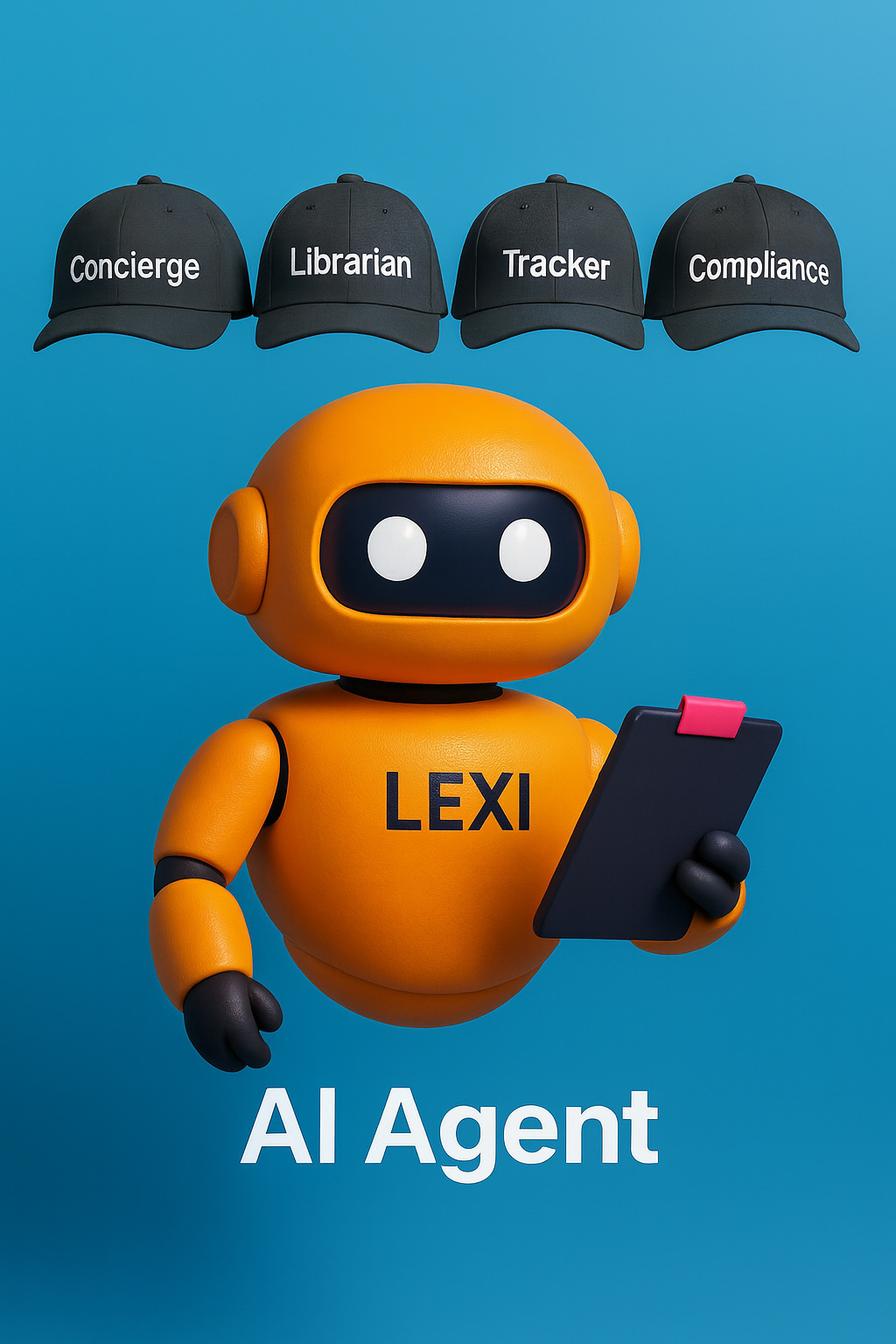Now that we’ve met the AI agent and explored what it is, it’s time to see what it does. If AI agents are the new colleagues in the office, the natural question is: what kind of work can they actually take on?
The answer: more than you think.
AI agents are already reshaping daily legal workflows across firms and practice areas. Think of them as adaptable team members who specialize in getting repeatable, high-volume tasks done faster, smarter, and often with greater precision than traditional methods.
Here are four concrete examples of how AI agents are quietly becoming indispensable in legal operations.
Mini series on AI Agent – Part 2 of 5
1. Client Intake Concierge
Lexi (our friendly AI agent) can be deployed at the front door of your firm—figuratively speaking. Instead of a static web form or a long PDF, Lexi engages prospects in a conversational dialogue, collecting relevant information about their legal issue, jurisdiction, urgency, and budget. It then categorizes the matter, flags potential conflicts, and routes the data directly into your CRM or practice management system.
Impact:
- Accelerates triage and response times
- Enhances client experience with a human-like touch
- Reduces manual data entry for intake teams
2. The Knowledge Librarian
Imagine needing a clause from a lease agreement your firm drafted five years ago. Instead of hunting through shared drives or asking around, Lexi searches across your document management system, pulls up the relevant version, and even identifies variations from similar deals. Better yet, it can explain the logic behind the clause based on past use.
Impact:
- Saves hours on document retrieval
- Promotes consistency in drafting
- Makes institutional knowledge more accessible
3. Litigation Tracker
Litigation timelines are full of moving parts: filing deadlines, discovery schedules, pretrial motions. Lexi can track docket activity across jurisdictions, update case calendars, and notify your team when action is required. It can even draft reminder emails or task assignments to responsible attorneys.
Impact:
- Reduces risk of missed deadlines
- Keeps teams aligned in fast-moving matters
- Acts as a proactive case manager
4. Compliance Whisperer
Building on the compliance radar from our last post, Lexi can also tailor alerts to your clients’ specific risk profiles. For example, it can monitor developments in ESG regulations for a multinational manufacturer and summarize actionable takeaways.
Impact:
- Positions your firm as a proactive advisor
- Delivers customized updates without human bottlenecks
- Scales insight across multiple clients efficiently
In each of these scenarios, the AI agent isn’t replacing lawyers. It’s removing the friction around tasks that sap time, attention, and billable value. The result? A legal team that’s more focused, more responsive, and better equipped to serve clients in a competitive landscape.
Next up: we’ll peek behind the curtain and explore how these agents actually work—and how you can start piloting them inside your own firm.




